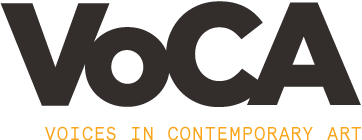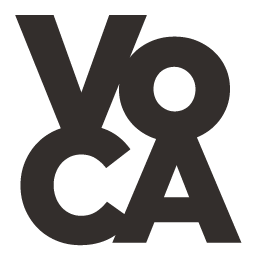Editor’s Note
Welcome to the Summer 2017 issue of VoCA Journal. In this issue, our contributors discuss the dynamic landscape of media art preservation, from its roots in the 1960s to the care of net art and digital media installations today.
Using the Museum of Modern Art as a test case, Jim Coddington (former Agnes Gund Chief Conservator, Museum of Modern Art) and Jill Sterrett (Director of Collections, San Francisco Museum of Modern Art) trace the development of media art conservation in museums. In their interview, they elaborate on the importance of cross-departmental collaboration for learning about an artist’s practice and mapping that knowledge to the treatment of artworks. They also begin to unpack the ways that caring for media art is prompting museums to become less rule-bound and more fluid in their approach to conservation. In another interview that advocates for a non-hierarchical approach to the preservation of digital creations, Gloria Sutton (Associate Professor of Contemporary Art History and New Media at Northeastern University) invites Zachary Kaplan (Executive Director of Rhizome) to discuss the genesis of Rhizome and the recent launch of the Net Art Anthology, which is dedicated to “retelling the history of net art from the 1980s to the present day.” Cautioning that the concerns of commercial digital platforms are not always aligned with the priorities of their users, Kaplan articulates an urgent need for cultural organizations to play a role in archiving digital and internet memory.
Essays by Karin de Wild (doctoral candidate, University of Dundee) and by John Lukavic (Associate Curator of Native Arts, Denver Art Museum) and Kate Moomaw (Associate Conservator of Modern and Contemporary, Denver Art Museum) consider the evolution of media art conservation through the lens of crossing borders, both technological and cultural. In her analysis of Jet Set Willy Variations (2002-present), a videogame created by Belgian artist collective JODI, de Wild explains that instead of existing as a static object, “this artwork contains a collection of variations and versions, or in other words, a web of happenings.” As both a curatorial strategy and a conservation technique, she advocates for displaying the works in their multiple iterations, and for preserving their digital artefacts. Digital preservation is also central to Lukavic and Moomaw’s discussion of Auto Immune Response: Weaving the Sacred Mountain (2011-12), a project by Native American artist Will R. Wilson that integrates functional QR barcodes into beaded weavings. Each code, when scanned by a smart device, opens a different video showing Wilson’s protagonist in one of the Navajo people’s four sacred landscapes. This article addresses how Auto Immune Response blurs the boundaries between traditional craft and digital art while also testing the capacity of the museum to acquire and nurture such a work. They ask: how will the artwork live on once inevitable updates in technology break the links between the beaded QR codes and their associated videos?
Julie Martin (Director, Experiments in Art and Technology, or E.A.T.) reminds us that efforts to preserve iterative, performative, and electronic works significantly predate the digital age. Her capsule history of E.A.T. chronicles watershed moments in the history of the organization founded by artists Robert Whitman, Fred Waldhauer, Robert Rauschenberg, and scientist Billy Klüver to foster a growing interest among visual artists, dancers, and composers to incorporate aspects of rapidly changing technologies into their work. E.A.T. was founded on the belief that “the collaboration of artist and engineer emerges as a revolutionary contemporary sociological process” that contributes to society as a whole. Martin’s article describes how many artists benefitted from collaborating with Klüver and a network of other technologically proficient colleagues during the 1960s, and how E.A.T. continues to document and disseminate information about those forward-thinking experiments today.
This is the first in an occasional series of VoCA Journal issues focused on the production, display, and preservation of media arts. We welcome your feedback.
Robin Clark


